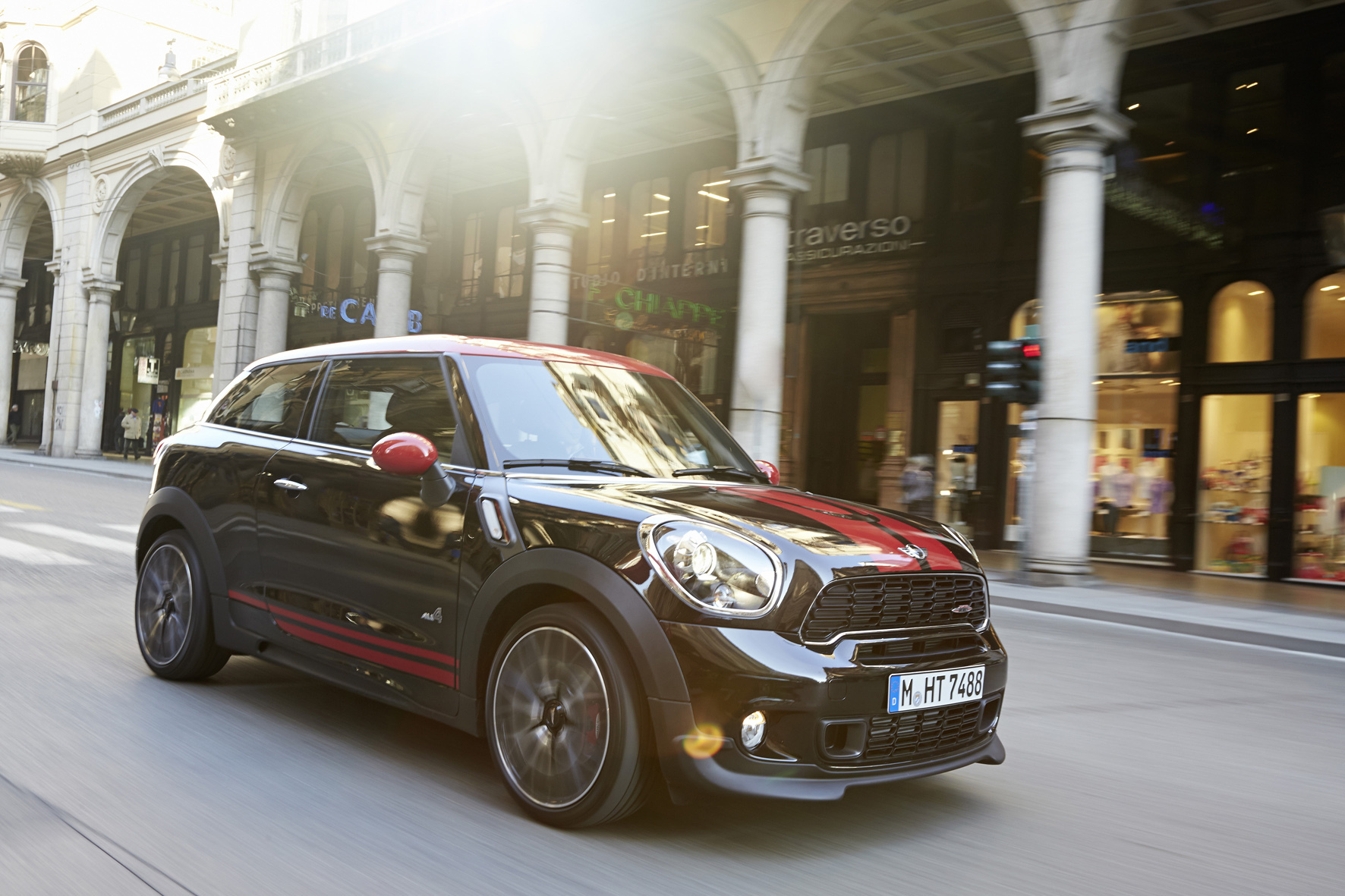First Drive: Mini John Cooper Works Paceman
You’d be hard pressed to find anyone who thinks that Mini doesn’t know what it’s doing when it comes to niche marketing.
Its John Cooper Works sub-brand has been a sales blockbuster, so it’s no surprise that a JCW flagship has followed so soon after the Paceman arrived.
But is this a shameless dilution of the brand, or a worthy expansion of JCW performance potential?
The Paceman doesn’t, perhaps, occupy the most obvious niche Mini has yet entered, with a raised compact SUV-like driving position, a sloping, coupe-like roof line and three doors, so there are some who have already dismissed the JCW Paceman as a marketing exercise.
But they’re wrong. There’s real talent under the Paceman’s skin to match its beefy and aggressive looks; you just have to dig a little to find it.
More of that after a closer look at the car’s raw ingredients. Under the bonnet you’ll find a 215bhp turbocharged 1.6-litre petrol engine, much the same as in any other John Cooper Works model.
But in the Paceman, which shares the five-door Countryman’s chassis, it’s linked to four-wheel drive which gives its own advantages and drawbacks.
Thanks to massive traction and advanced electronic back-up systems it’s almost impossible to spin any of the wheels away from a standstill for more than an instant, even on snow.
Of course the system does bring a weight penalty but it’s worth the trade-off for the improvement in driveability.
It helps to provide seriously stable handling, and with the test carried out in near-freezing conditions on cold weather tyres the JCW Paceman could really strut its stuff and show off the delightful compliancy in its chassis when it’s being pushed hard.
If you’re lacking commitment along a country road the car can actually feel quite awkward with a bouncy ride and boomy engine between 2,000 and 3,000rpm, and it’s only when you up the ante and go all out that the JCW Paceman shows you what it can do.
The ride becomes astonishingly composed, with the suspension absorbing all kinds of hits in its stride and seldom nudging the car off its line at all.
There’s some initial body roll in corners which is to be expected with a car of this height and weight, but all in all it’s a great set-up for fast road use.
Revved hard the engine has a rorty zing. At higher speeds the initially slightly artificial-feeling steering gives way to impressive feedback and accuracy and the front end becomes nicely active mid-corner, pulling towards or pushing away from the apex depending on your throttle inputs.
Through corners a natural tendency towards slight understeer is countered with a squeeze of the go-pedal, which turns it into neutrality and rapid forward motion in a heartbeat.
With a relatively soft power delivery, though, it’s done so in a very forgiving way.
The JCW Paceman isn’t about to catch you out or spit you into a tree, and in fact it’s almost impossible within the limits of sane driving to get the rear end to move much at all. But it still feels lighter than its 1,475kg. It feels agile and eager to attack bends in the same way as the smaller JCW hatchback.
There’s some turbo lag and there are faster-responding turbocharged engines out there, but this is a user-friendly choice and is as happy trundling along at urban speeds as it is howling along mountain passes.
Either way, the gearbox is on the firmer side when you’re sliding the lever between the six ratios, but it’s set up well with just enough notchy feeling to let you know each gear is properly located.
Its only flaw is that it’s a little too easy to find reverse instead of first. But of course the driving experience isn’t the real reason people will buy this car.
It’s the other factors that the driving experience is balanced with, like the raised driving position – which, with the amount of headroom still on offer, reminds you how big the Paceman really is – and the dual-layer boot floor for extra practicality.
It’s no family car but it does have useful luggage space. Getting in and out is easy, aside from a notable rearward stretch to grab the seat belt.
The Paceman cuts out some of the light for rear passengers compared to the Countryman so it’s less suited to carrying four people, but the perches are there should they be needed.
There are a number of reasons why the JCW Paceman shouldn’t make sense and it’s certainly not a cheap choice, but it’s completely unique in its blend of looks and talents, and like it or not it’s a blast to drive. On that basis it’s going to win fans.
FACTS AT A GLANCE
Model: Mini John Cooper Works Paceman, £29,535 on the road
Engine: 1.6-litre turbocharged four-cylinder petrol producing 215bhp and 207lb.ft
Transmission: Six-speed manual gearbox driving all four wheels
Performance: Top speed 140mph, 0-62mph in 6.9 seconds
Fuel economy: 38.2mpg
CO2 rating: 172g/km
Written By: Matt Kimberley, Press Association Motoring Writer
Latest posts by Sally - Silversurfer's Editor (see all)
- How to help hay fever sufferers make Springtimemore comfortable - April 1, 2025
- Win a cruise of your choice with Fred. Olsen Cruise Lines - April 1, 2025
- Win a 2025/26 Ashes Experience for Two! - April 1, 2025
- Win ONE of THREE pairs of tickets for BBC Gardeners’ World Live at the NEC Birmingham - April 1, 2025
- The best of Debbie Reynolds - March 31, 2025





















